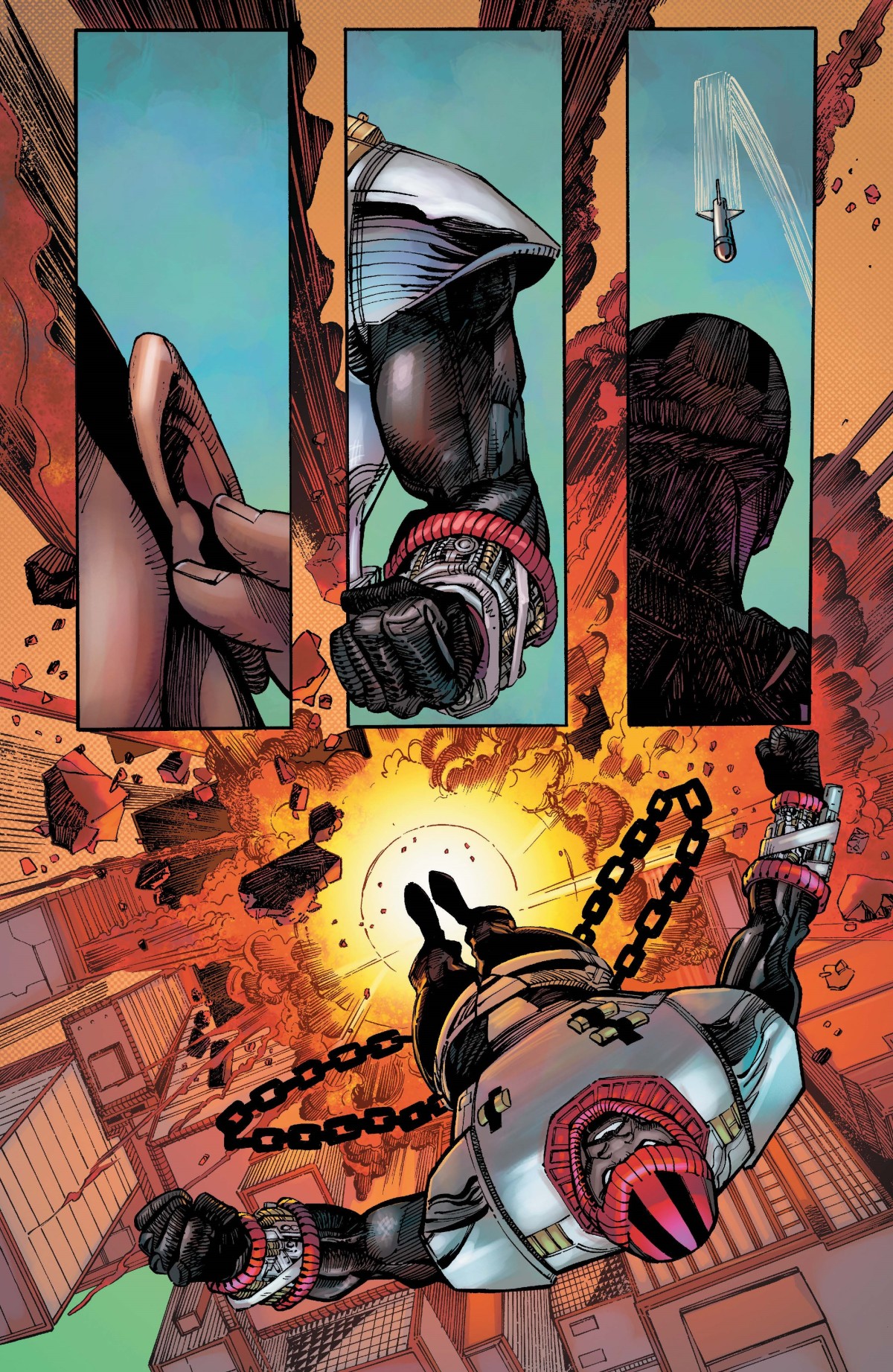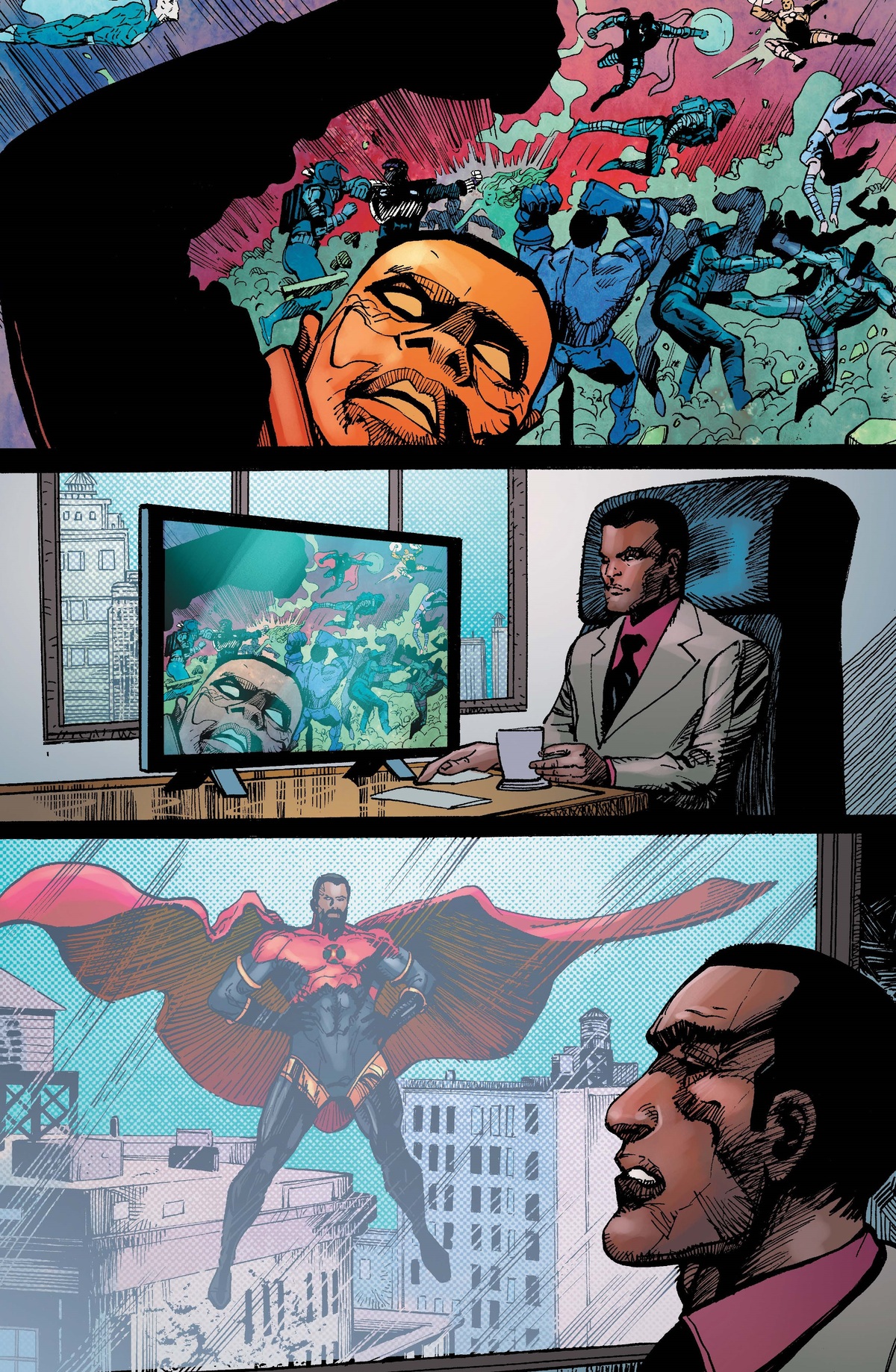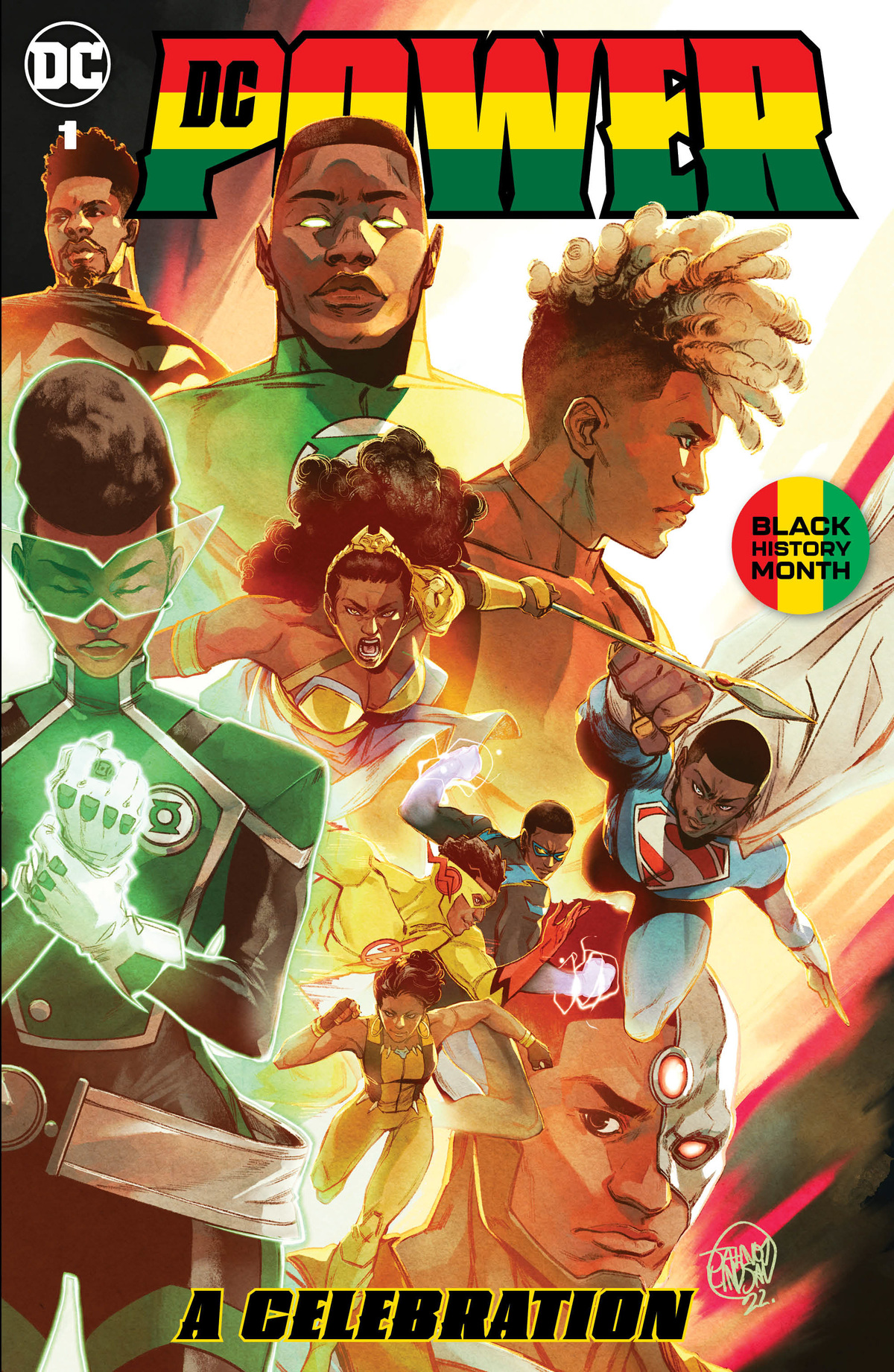This article appears in the next issue of DEN OF GEEK magazine. Get your copy here.
Thirty years ago this month, Milestone Media launched and the comics world listened. Hardware #1 from legendary creators Dwayne McDuffie and Denys Cowan was the company’s first book in February 1993. It was nothing less than a statement of purpose, a book about a Black genius fighting his white industrialist boss (who’s secretly a crime lord) to get pay and recognition for his inventions.
But it wasn’t until the Static Shock cartoon launched on TV in 2004 that Milestone made a broad cultural impact. “For so many of us in that generation, Static [Shock], the cartoon, was the door that opened a lot of things up,” Jordan Clark, a member of the Milestone Initiative’s inaugural class, tells Den of Geek magazine.
Milestone Media and the superheroes it developed—Static and Hardware, Icon and Rocket, the Blood Syndicate, and so many others—turn 30 this year. The Milestone Initiative, a program designed by Milestone’s current leadership to bring new talent into an industry that’s almost constitutionally resistant to change, just wrapped up its first cohort. Doors are being kicked open, and the comics line is arguably better than it’s ever been—high praise for characters created by incredible talents like McDuffie, Cowan, Michael Davis, and Derek Dingle. But before this revival, the line and the company seemed to have been stuck in a state of perpetual near-relaunch for the better part of a decade.
Milestone Media was founded in 1993 by McDuffie, Cowan, Dingle, and Davis. Others were there and involved in its formation—Christopher Priest, the incredible mind behind one of the best Black Panther runs of all time as well as a brilliant recent run on DC’s Deathstroke, was working behind the scenes to launch the company, as was the media mogul who would eventually be instrumental in its return, Reginald Hudlin. “When we first started Milestone, Reggie was one of the original people who was invited to be part of the company, [but] he couldn’t do it because he was directing a movie called Boomerang with Eddie Murphy,” Cowan says. “I couldn’t believe that he would turn us down for something like that.”
The company was part of the mini-labor revolution in early ‘90s comics that saw superstar creators breaking away from traditional superhero publishers and striking out on their own. “Thirty years ago, everyone was younger, all the ideas we had were gonna be great, and we were gonna do everything to change the world,” says Cowan. For others in the creator rights movement, it was about controlling their own ideas and stories. That was a big part of the goal for the Milestone founders, but it was also about making more Black superheroes. “I’ve had people who were very heavy into collecting comics at the time,” says Clark, “who would just talk to me about what it was like going into the stores, picking up Blood Syndicate, picking up Hardware, picking up Icon. I could feel the love and passion from them.”
The founders formed their company and made a deal with DC for distribution and promotional support, and they were initially very successful. The characters they created resonated. Icon is a super-powered alien who crash lands on a plantation in 1839 and is adopted by an enslaved woman, takes the form of a Black child, grows into his powers, and doesn’t age beyond adulthood. Hardware, aka Curtis Metcalf, is a young genius inventor whose patron is a mega-industrialist and who uses his brilliance to create technology to fight crime. He breaks away from his patron after being denied a share of the profits from his labor (sound familiar?). There’s the Blood Syndicate, a group of people who gain superpowers after a gang war in Dakota City is broken up by police using tear gas laced with an experimental chemical. And there’s one bystander to that police attack who became Milestone’s biggest character—Virgil Hawkins, the beloved Static.

The line sold like mad for a bit and grew to include new titles like Shadow Cabinet, a super team dedicated to protecting humanity, and Xombi, about a Korean-American scientist named David Kim who got loaded up with nanites and became nearly immortal. But after that early success, the comic industry took a turn, and so too did Milestone’s publication fortunes. Static remained broadly popular because of the cartoon, but by 1998, the comics ceased publication, and there began a decade-long struggle to return the characters to the public eye.
DC worked to integrate the characters into the main universe, with then DC Editor-in-Chief Dan DiDio announcing Static would join the Teen Titans at San Diego Comic-Con in 2008; the publication of a new Xombi series in early 2011; and Static Shock as a launch title for DC’s big New 52 reboot later that same year. But despite those green shoots, the comics never took a firm hold, and with McDuffie’s tragic passing in 2011, it seemed like Milestone’s return was going to be a heavy lift.
But in a way, it was McDuffie’s death that helped set the stage for Milestone’s huge return, even if it took several more years. Cowan, Dingle, and Hudlin spoke at McDuffie’s wake and resolved to get these characters back into print. “Derek said, ‘It’s been too long. We’ve got to restart the company’,” Hudlin told the Washington Post in an interview in 2015. “So the three of us have been working…on sorting out all the business, and now we are the core of Milestone Media 2.0.”
Flash forward a decade, and Milestone is on fire. The whole line is back in regular publication and being created by some wildly talented people. Icon & Rocket, by Chills, Hudlin, and Doug Braithwaite, follows Augustus Freeman and Raquel Irvin as they try to use their powers to change the world for the better. Hardware, by Cowan and Brandon Thomas, has Curtis Metcalf fighting his crime lord ex-boss to protect his own creations. Blood Syndicate Season One paired original Milestone talent ChrisCross with Geoffrey Thorne to tell the story of Dakota’s super-powered gang war. Duo updates the old Xombi concept with star creators Khoi Pham and Greg Pak. And Static: Season One matched Vita Ayala’s thoughtful character work and sharp dialogue with thrilling, energetic visuals from Nik Draper-Ivy.
While the characters and the concepts are familiar, the execution is very different. Back in the day, you “…couldn’t walk out of a burning house [with Jefferson Davis’ severed head],” Cowan laughs, referring to the page in Icon and Rocket Season One #2 that sees Icon doing just that. “I love the direction it’s going in… it’s just taking all those things [we were trying to do] and pushing even further.” The fresh talent—Chills, Draper-Ivy, Ayala, even Hudlin, who is only now finally getting to play with the toys his friends set up—are taking these stories in fun new directions. “When we have our brainstorming sessions, [Reggie’s] extremely excited,” says Chills. “It’s his first time getting to actually write for Milestone, even though he’s been part of the history for so long.”

Case in point: Icon vs. Hardware, the new crossover written by Chills and Hudlin, with art from Cowan. “The book is about the battle between two ideologically different superheroes and their approach to creating a utopia,” Chills tells us. “And there’s a time machine.”
Hardware gets his hands on a time machine created by 18th-century inventor Benjamin Banneker and plans to use it to right wrongs in the past. But while there, he runs into the nigh-immortal Icon. “Icon comes from a utopia, in Terminus,” Chills tells us. “And then, with the time machine, Hardware has the ability to make changes, to create what he hopes will be a utopia. He certainly thinks he’s smart enough to make those changes with no consequences.”
It’s safe to assume that those consequences will be the crux of the story. “With Curtis… there’s an element that because he’s Black, there are certain atrocities that he feels like he can potentially effect to create a better future for his people,” Chills says. “[It’s] him trying to do what’s best for his people.”
And then there’s the other piece of the returned Milestone’s work: the Milestone Talent Initiative. In partnership with Ally Bank and DC, Cowan, Hudlin, and Dingle have brought in a new generation of talent from historically marginalized backgrounds to teach them about the comics industry. You see the Talent Initiative starting to bear fruit in this year’s DC Power: A Celebration anthology.

The Milestone Talent Initiative is a piece of DC’s Next Generation pipeline, a way to nurture and support diverse new voices and bring them into the DC Universe. Jordan Clark and Dorado Quick are two members of this inaugural class, and they co-wrote a Kid Flash/Aquaman story in DC Power that tackles DC’s legacy heroes (something these characters speak to very effectively) from a distinctly Black lens. Their story has Wallace Wells and Jackson Hyde—Kid Flash and the new Aquaman—arguing about their places and struggles as Black legacy heroes, and trash-talking each other the way only old friends can. Quick says that he and Jordan Clark developed the idea out of “a combination of three things: our love for the characters; owning a name like [in] Creed; and Issa Rae’s Insecure about [being] comfortable about who you are.”
There’s a bit at the end of their story where a young boy asks Kid Flash for his autograph. Clark and Quick meant that piece as a reflection on their time in the Milestone Initiative. “You go through something; it’s not just for you,” says Clark. “It’s often for someone else to look at your example…everything that Wallace and Jackson are going through, some little kid who is aspiring to be like them, if they don’t exist, if they’re not there, no matter what they’re going through, that young person doesn’t ever believe that they can be that.”
Despite this success, the work isn’t done. “I’m not usually a person who focuses on all the wonderful things we’ve already done,” says Cowan. “It’s always what we have to do next. So all that stuff with the Milestone Initiative is awesome. It’s great. Did it fulfill whatever mission I had back then? No, [but] it’s a start. You know, it’d be great if there was a Milestone Initiative every year for the next 10 years.” Let’s hope the Initiative can keep bringing new voices to superhero comics for longer than that.
Icon vs. Hardware #1 from Chills, Hudlin, and Cowan is out now in comic shops and digital platforms. DC Power: A Celebration, featuring Quick, Clark, and several other Milestone Initiative grads, is also available now.
